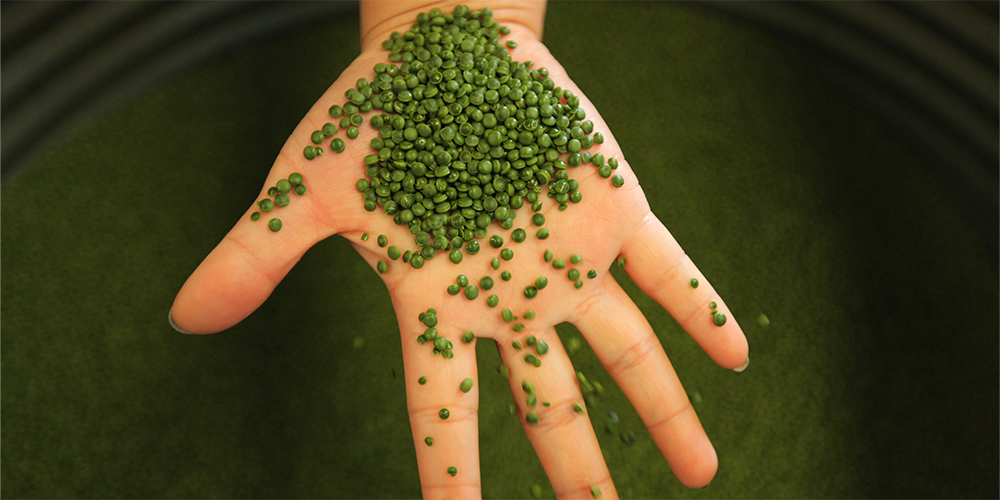Manufacturers of artificial turf are concerned with a lot of factors. A primary concern is 'Is the product environmentally harmless'? To address this growing concern, manufacturers and scientists work together to check the production process. Where artificial grass has relieved us with its uses, it has also helped us save our environment. It helps save natural energies and reduces chemical waste as much as possible. Artificial grass is required to meet some standards by adopting advanced manufacturing methods. These standards pass environmentally friendly products for sale and usage.
Solar energy:
Industries use solar energy to run machines and units to manufacture artificial grass. This saves other sources of energy and causes no harm to the atmosphere. It reduces atmospheric carbon levels by using a natural energy source and does not emit harmful substances into the environment.
Saves water:
Water is a limited resource on our planet necessary for the growth of natural grass. However, artificial grass does not require regular watering; this saves water to a considerable extent.
Raw material:
The raw material used to manufacture artificial grass is polyethylene or discarded yarn. It saves the environment by using worn-out yarn filaments and reduces environmental pollution.
Infill:
A natural organic infill is sustainable, and upon disposal, it will not be a part of a waste lump. Organic infill is biodegradable, hence eco-friendly. It is durable and does not require frequent plastic fiber disposal.

UV-resistant:
Ultra-violet radiations are dangerous to human health. The artificial grass becomes heated by its long exposure to sunlight but remains safe for use. This safety is due to the use of UV-resistant agents during the manufacturing of fibers.
Chemicals and fertilizers:
Synthetic grass does not require any toxic chemicals or fertilizers for its maintenance. However, it saves many essential resources and chemicals. Some substances which are used for natural grass may deteriorate the environmental quality. But in the case of turf, there is no threat of such a thing.
Clean area:
There is no problem of mud accumulation, water logging or untidy long grass in the case of artificial grass. It does not require specific cleaning techniques and keeps your area clean and elegant.
Tiny pores in turf allow easy water drainage and do not allow water to disrupt its fibers. There is no threat of water accumulation and fungus formation in this case.
Conclusion:
People in various fields widely use synthetic turf because its structure does not restrict its use. People allergic to grass can use this artificial grass in their lawns without any side effects. Children and pets can play on this grass mat without any risk of worms, insects and toxic chemicals. In short, artificial grass provides a hygienic and healthy environment for everyone.


